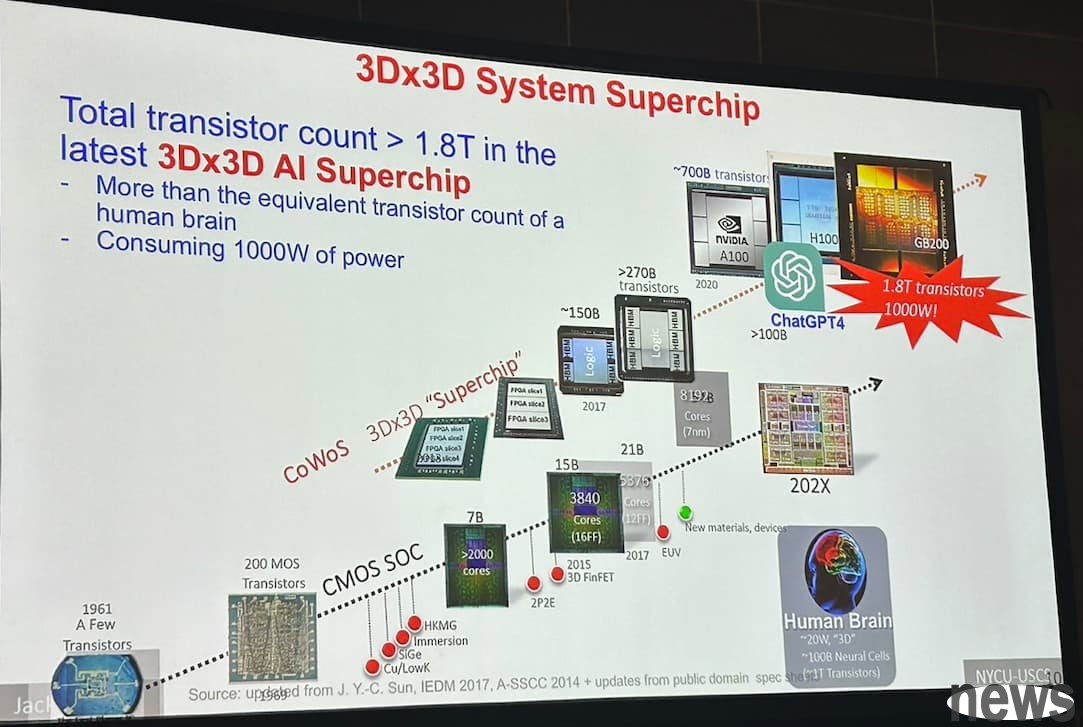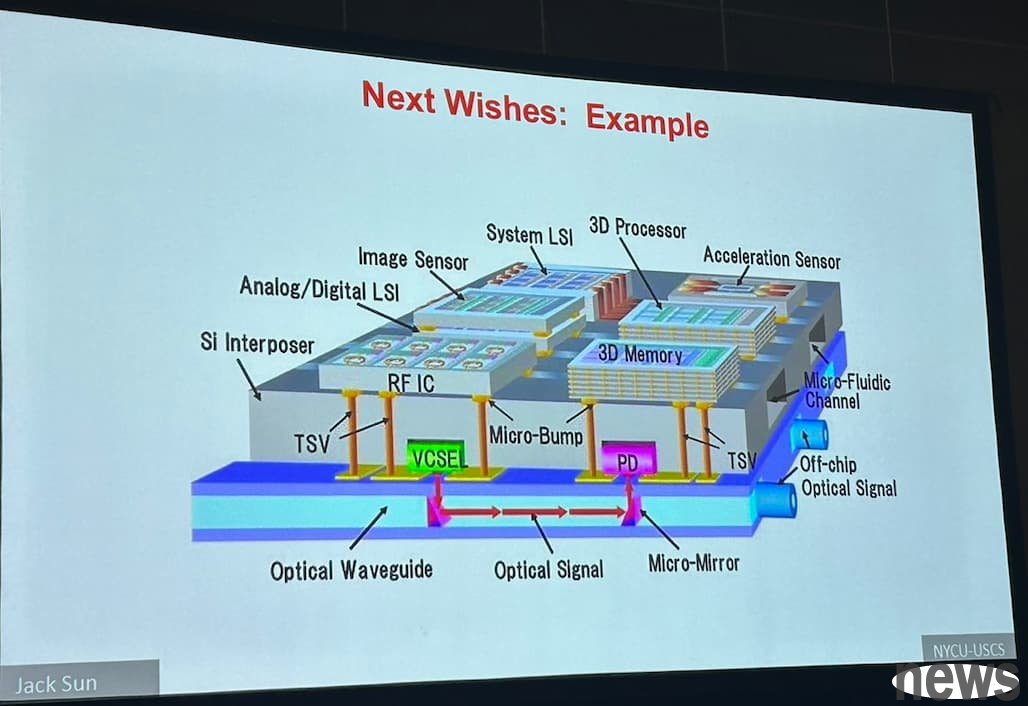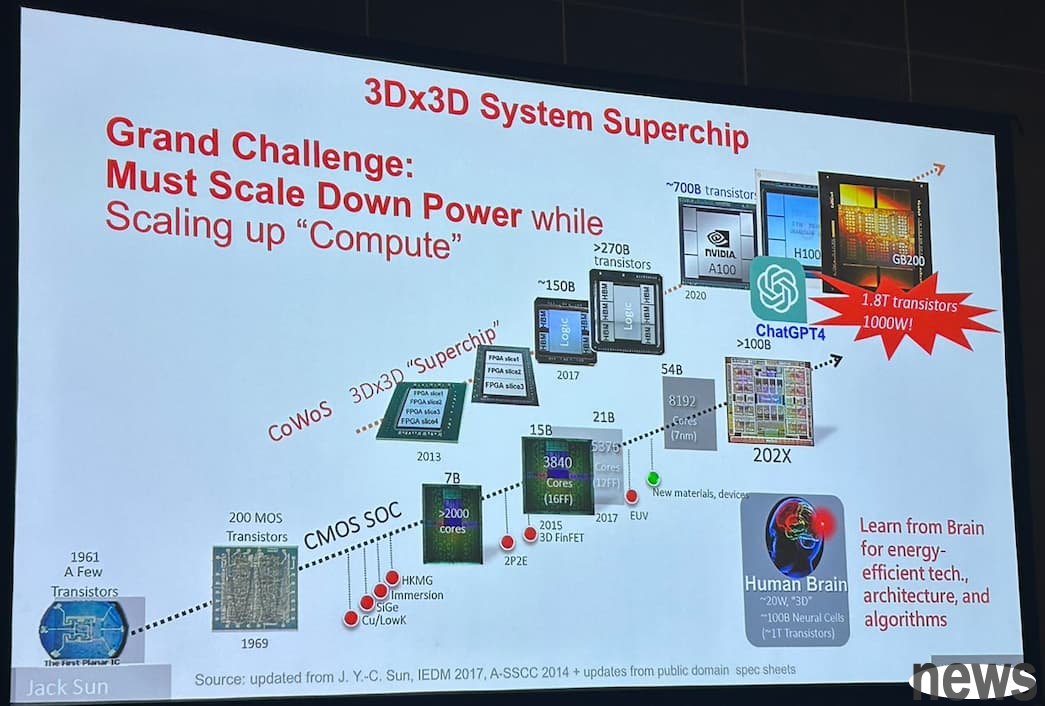
Sun Yuancheng, former technical director of Taiwan Electric and vice president of National Yangming Communications University, shared the progress of 3D x 3D system expansion in the different quality integration forum today (9th) as well as current industry challenges and future innovation.
Sun Yuancheng pointed out that before the 3D heterogeneity integration, TEK began to invest very early and continued to push CMOS to retract through 3D structures. These sensors, other components, logical CMOS or memory are like human brains; while special applications such as sensors and actuators are like facial features and limbs; as for 3D The "interposer" in heterogeneous integration is like the spine of a human, supporting and transmitting all messages, just like a neural system. At that time, the media used "superchip", Apple chip or InFO package on package as its name, but these are early representatives of 3D x 3D integration and system expansion.

"We can integrate Chiplet and Packagelet together so that different technologies can continue to evolve and strengthen each other, while achieving the best system performance, power density and appearance design." Sun Yuancheng also mentioned that photonics and CPOs become very important for data centers, data scale, AI factories or AI processing.
Sunyuan believes that if you imagine it, more components can be integrated in silicon-based electronic packaging in the future, and may even be converted into glass. In addition to photons, the cooling mechanism must also be integrated, and more solutions will emerge in the future. As for system applications, different applications require different packaging forms, so there will be various needs to integrate different types of Chiplet or components.

"We are really experiencing another big Bang!" By combining big language models and computing capabilities, we can deploy AI to all industries and applications, and benefit everyone. Nowadays, with the emergence of generative AI and various capabilities, we are entering the era of data scale, data-centric AI, and smart devices such as edge AI.
Although power consumption and energy efficiency are still one of the biggest challenges from a technical perspective, the market still has a large demand for this, but it also brings no chance. Sun Yuancheng believes that new ways must be found in architecture, algorithms, and cross-domain common innovation and co-design, or to gain a sense of spirit from the human brain, and "in-memory computing" will be the starting point.

Speaking of Taiwan's role, Sun Yuancheng said that in different levels, supply chains and capabilities, all parties have their own strengths. No country or region can handle all the business. It should be based on its own strengths, and cooperate to advance to create a dual-win and symbiotic ecological system. He believes that there are many opportunities ahead, including quantum technology, new materials and even quantum computing, which is worth developing in the future.
Sun Yuancheng said, "We are heading towards the new era of "AI Super Moore" and 3D × 3D, and we must draw a sense of spirit from the human brain. Instead of only looking at the rise in Moer's law or chip costs, we should pay more attention to the value and wisdom that can be created behind it. We must also face the challenge of energy consumption head-on, because the most exciting future is still ahead."
Extended reading: Silicon Photonics Forum is the first to appear today, Taiwan Electronics Share COUPE Technical Current Qualcomm deepens cooperation with Valeo, promotes ADAS solutions and accelerates software definition of automobile transformation